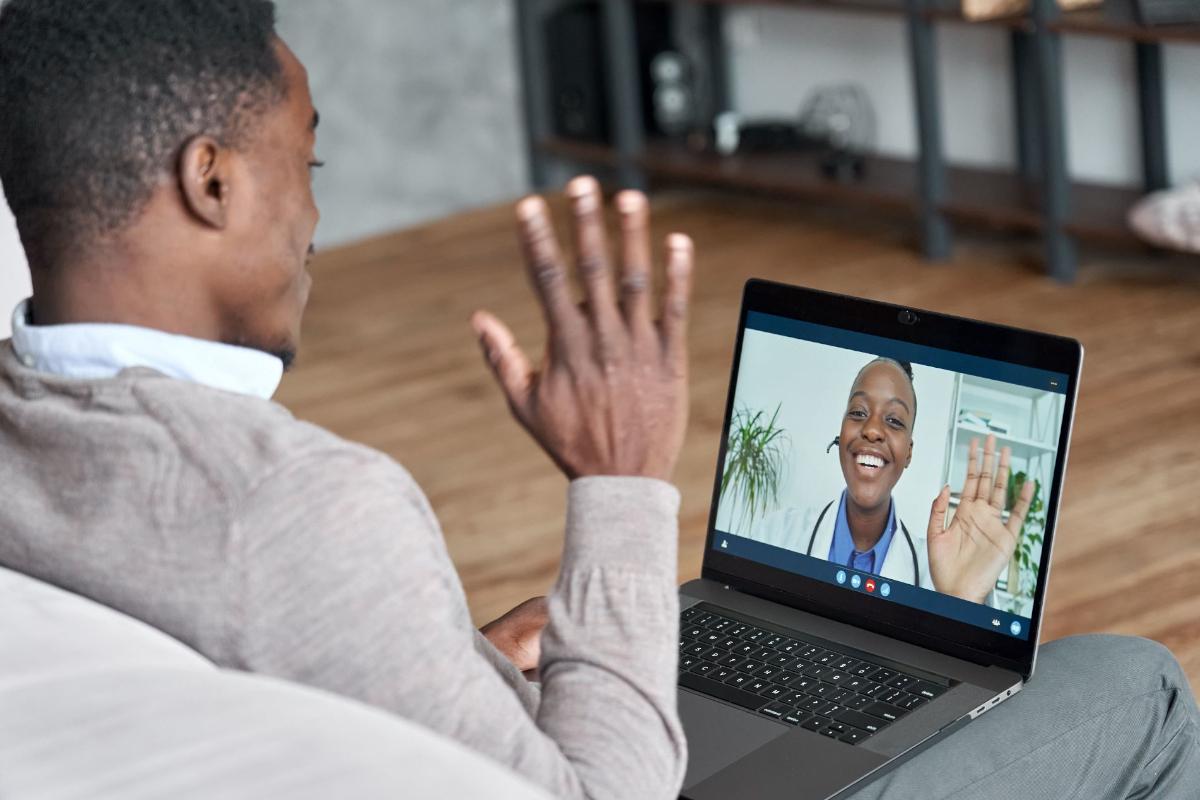Telehealth is here to stay: How can you make the experience better for patients?

The COVID-19 pandemic changed a lot about our lives; We suddenly had to do everything remotely, and that included healthcare. But unlike the mask mandates and gathering limitations, telehealth is not likely to go away once the virus is under control.
As providers, it’s important to be as prepared as possible as you head into this new age of patient care. Offering a positive telehealth experience could be the difference between a patient staying with you or seeking care elsewhere.
The case for telehealth
Recognizing the surge in telehealth adoption, the United States Centers for Medicare and Medicaid Services (CMS) added more than 60 services to its telehealth coverage list in December 2020. That means Medicare and Medicaid plans would continue to cover a range of telemedicine options beyond the COVID-19 public health emergency.
CMS also noted in its announcement that it would keep looking at telehealth options and determine whether it should cover more services.
Meanwhile, a report issued in December 2020 by Fortune Business Insights estimated the global telehealth market size at $61.4 billion (U.S.) with a projected growth to $559.5 billion by 2027.
These numbers don’t come as a huge shock since 83% of patients polled by Doctor.com last year said they expect to use telehealth after the COVID-19 pandemic. Providers are on board, too — a survey in late 2020 found that nearly 70% of providers are looking to use telehealth more after experiencing it during the pandemic.
At All Global Circle, we’ve seen significant interest from clients who are looking to better understand telehealth trends and how it affects a practice and the patient experience. This translates into survey opportunities for our members, who can offer unique insight into the telehealth movement.
Improving the telehealth experience
The message is loud and clear: While the pandemic may have spurred telehealth growth and popularity, patients and providers have adapted and are going to stick with this care platform. As providers, staying competitive means that you need to offer an experience comparable to your in-person visits — or better.
There’s no denying that a telehealth appointment is different from an in-person clinic visit, but that doesn’t mean it should be less valuable for your patient. Following these few essential tips can help ensure a positive and productive experience.
Show your compassion
Many patients walk into your clinic feeling anxious, nervous or scared, which may also be the case during a telehealth appointment. Although you can’t provide reassurance in person, it’s essential to show your compassion and care through the virtual platform.
Pay attention to your tone of voice, body language and facial expressions — you don’t want to come off as cold or distant. Acknowledge how the patient is feeling and ask questions to show that you’re listening.
Remember that this platform is new to many people, so it’s also crucial to have patience as everyone is figuring out the virtual process.
Look professional
We’ve all been on video calls where someone has a barking dog or telephone ringing in the background. And there’s plenty of stories about people showing up to calls in less-than-professional attire.
Despite the virtual platform, patients are still going to expect a professional interaction. Your appearance and demeanor go a long way in building trust. Remember to:
- Wear neat and clinic-appropriate attire. You don’t necessarily need to be in a white coat, but present yourself in the same way you would during an in-person visit.
- Put your phone and any other distractions on mute. That includes keeping kids and pets out if you’re doing the call from home.
- Look and speak directly at your camera. This is the equivalent of making good eye contact with the patient during a visit.
- Don’t multitask. While you may be on a computer, don’t be tempted to check email or look at different screens while you’re meeting with a patient. If you plan to take notes, make sure to tell the patient that you’ll be writing or typing, so they don’t feel like you’re distracted.
Check your tech
It doesn’t matter if you have a top-of-the-line camera or fast internet speeds — technology glitches happen to everyone. These problems can be particularly frustrating during a virtual clinic visit.
You may not prevent every glitch, but you can lower your risk for tech issues by double-checking your setup regularly. Most video call platforms have built-in checks you can use to verify that your camera and microphone are working. If you’re doing the call from the clinic, make sure you have contact information for your IT department handy in case you have a question.
Seek follow-up input
Telehealth has been around for a while, but the surge during COVID-19 meant many people had to adapt quickly. The platforms are still new to many clinicians and patients.
With that in mind, make sure to seek feedback from your patients after a virtual visit. Your health system may have a post-visit survey process, but it’s important to include questions about telehealth appointments. Ask about the patient’s overall experience, the video platform and whether they would consider telehealth in the future. Make sure you’re using that feedback to improve your virtual care process.
Improve care for current and future patients
The explosion of telehealth has expanded access and improved care for people around the world. As a provider, offering virtual visits can remove barriers for many patients and allow you to make a broader impact in your community.
At All Global Circle, we value our members’ input about telehealth and the future of patient care. Signing up for our panel allows you to weigh in on healthcare trends and research shaping treatments and therapies in your field.
Sign up today to learn more about the panel and access a sign-on bonus of up to $50 (or equivalent to your country’s currency).